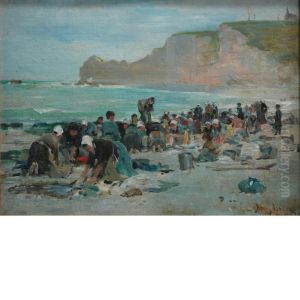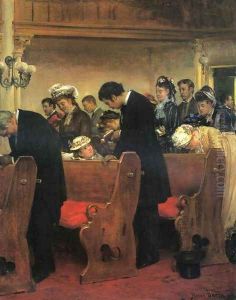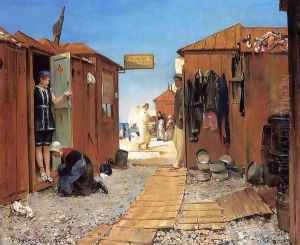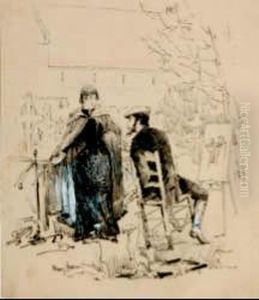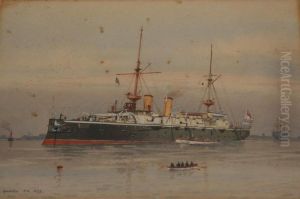Henry Bacon Paintings
Henry Bacon was an American architect, most famously known for designing the Lincoln Memorial in Washington, D.C. Born on November 28, 1839, in Watseka, Illinois, Bacon's early life set the stage for a career that would leave a lasting impact on American architecture. He began his architectural studies in the mid-1880s, after moving to Boston, Massachusetts, where he worked for the firm of Chamberlin & Whidden. His education and early career were marked by a traditional approach to architecture, heavily influenced by the Beaux-Arts style, which he would later incorporate into his most famous work.
In 1889, Bacon traveled to Europe, an experience that expanded his architectural perspective and deepened his appreciation for classical styles. Upon returning to the United States, he joined the firm of McKim, Mead & White in New York City, one of the most prestigious architectural firms of the time. This position allowed him to work on significant projects and further honed his skills in the Beaux-Arts tradition.
Bacon established his own practice in New York City in the late 19th century. His reputation as an architect grew, leading to commissions for various public buildings and memorials. However, it was his design for the Lincoln Memorial, commissioned in 1911, that became his most enduring legacy. The memorial, completed in 1922 after his death, is considered a masterpiece of American neoclassical architecture. It embodies the principles of Beaux-Arts design, including symmetry, the use of classical elements, and an emphasis on monumental scale.
Throughout his career, Bacon was recognized for his dedication to the craft of architecture and his ability to seamlessly integrate classical design principles with the demands of modern projects. His work on the Lincoln Memorial, in particular, demonstrated his skill in creating a space that was both awe-inspiring and deeply reflective of American values. Bacon's contributions to architecture were widely acknowledged during his lifetime, and he was awarded the Gold Medal of the American Institute of Architects in 1923, posthumously recognizing his significant impact on the field.
Henry Bacon died on February 16, 1912, in New York City, leaving behind a legacy that has endured in the American architectural landscape. His work, especially the Lincoln Memorial, continues to be celebrated for its beauty, its adherence to classical traditions, and its expression of national ideals. Bacon's career is a testament to the enduring appeal of classical architecture in the United States and its capacity to convey powerful historical and cultural narratives.

